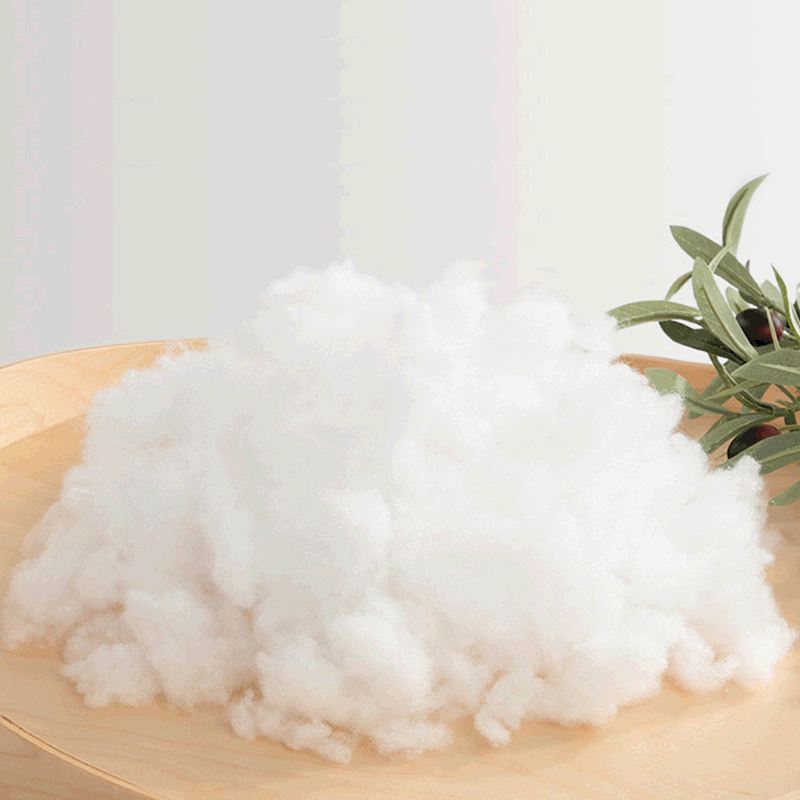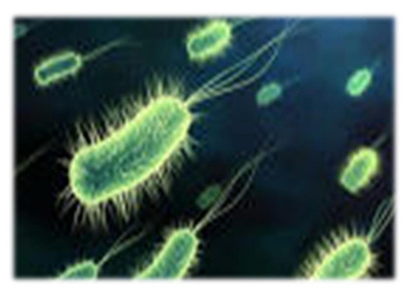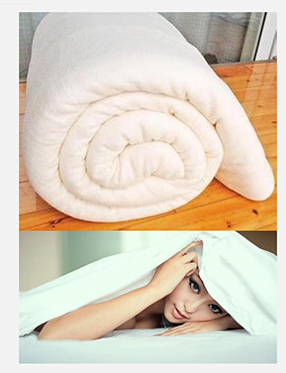Video
1 / 2
Renewable GRS Fiber Cotton
| Model No. : | Grs Recycled Filling |
|---|---|
| Brand Name : | PULANSE |
| product type : | Other Fiber |

Product description
Renewable GRS Fiber Cotton
PLA fibre filled cotton, biodegradable, recycled polyester fibre, grs certified renewable.
PLA is a sustainable eco-fibre as it can be decomposed into carbon dioxide and water by microbial action in soil or seawater and does not emit toxic fumes when burned.
Staple fibre filler, can be customised into flock/glueless cotton/upright cotton etc.
Can be customised to be flame retardant


New fibres from plants
New renewable material extracted from plant fibres
Properties of PLA fibres
Comfort
Excellent moisture wicking, 8 times more comfortable than polyester fibres
Ecological anti-bacterial properties
Ecological anti-bacterial properties balance the body's micro-environment, helping the growth of beneficial bacteria and inhibiting the reproduction of harmful insects, thus maintaining human health.
Flame retardant
With an extreme oxygen index of 26, LO1 is the best flame retardant of all fibres.
Resilience
The curl elasticity of the fibre is 95%, which is significantly better than any other chemical fibre.
Hygroscopicity
Very low moisture absorption, with an equilibrium moisture content of 0.4-0.6%, better than polyester and other fibres
Easy to wash
Easy to wash and yellowing resistant
Biocompatibility
The monomer L-lactic acid is an endogenous active substance in the human body, and PLA products are non-toxic, non-repellent and can be absorbed by the human body.
It is made into a medical skeleton material and a pharmaceutical carrier and is safely used in the human body.
Environmentally friendly
The fibres do not produce toxic gases when burned, only CO2 and water. The fibres are completely degradable and can be buried in the soil in 6-12 months to produce carbon dioxide and water.
Properties and advantages of PLA fibres
1. Safety - L-lactic acid, the raw material used in PLA fibres, is an endogenous substance in the human body and is an important organic acid with high biochemical activity and safety, which is widely used in food and medicine. With its biocompatibility, it can be used as an absorbable surgical suture.
2. Breathable and moisture-conducting - PLA fibres have distinct transverse grooves in the longitudinal direction and slightly rounded cross-sections with distinct pores and cracks, thus enhancing the capillary effect of the fibres and ensuring that they are breathable, dry and moisture-conducting without being stuffy.
3. Natural anti-bacterial properties
In general biodegradable plastics, microorganisms such as bacteria and moulds are in a tendency to attach themselves easily, but PLA fibres are the exception. The very small amount of lactic acid inside them leaches out part of the material surface, making the material surface as weakly acidic as human skin, preventing the attachment and reproduction of microorganisms such as bacteria and moulds. It thus creates a natural, smooth antibacterial environment without any processing, making it difficult for bacteria to multiply, with an inhibition rate of 98% against bacteria and fungi, and also against dust mites.
Polylactic acid fibres have the advantages of natural fibres and at the same time have the characteristics of synthetic fibres that can be shaped twice and processed young, so they are one of the future directions of fibres.

The ecological antibacterial effect of the lactic acid factor
Unlike other anti-bacterial materials: the lactic acid on the surface of PLA fibres The lactic acid on the surface of the polylactic acid fibres is the same as the lactic acid on the surface of the human skin, which is weakly acidity, which inhibits the reproduction of pathogenic bacteria (over 90% inhibition rate) and The lactic acid on the surface of PLA fibres is in line with the lactic acid on the surface of the human skin and is weakly acidic. (other anti-bacterial materials can be harmful to (other anti-bacterial materials will inhibit and kill beneficial bacteria and damage the body's own immune function), promoting The product promotes the micro-ecological health and balance of the body and maintains the body's own It promotes a healthy and balanced micro-ecology and maintains the body's own immune function.
Applications for polylactic fibre wool
Home textiles
PLA fibres are UV resistant, low heat of combustion, low smoke emission, stable good stability, good washing resistance, especially suitable for indoor hanging (e.g. curtains, drapes), upholstery, carpets and other products. curtains, draperies), upholstery, carpets and other products. The use of PLA fibres The resilience, anti-bacterial and anti-mitotic properties of PLA fibres allow for the production of very fluffy and soft textiles. For example, PLA fibres can be used directly as filler in bedding products such as pillow cases and quilts, quilts, etc.

Our other hot products
Baby Products
Baby Products Wadding
Baby Products Filling
Baby Products Ball Filling
Baby Bedding Products
Video
Send your inquiry to this supplier









